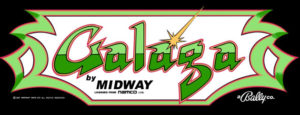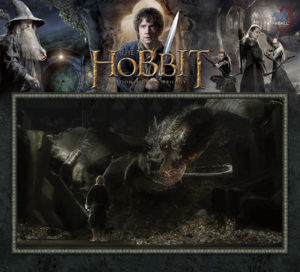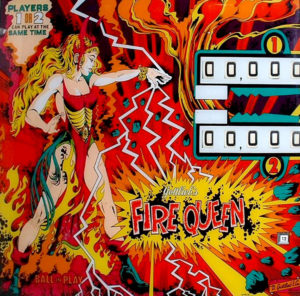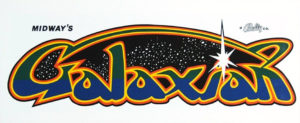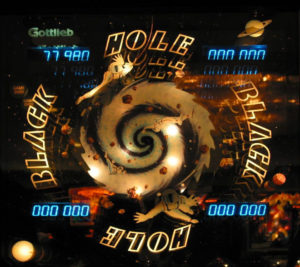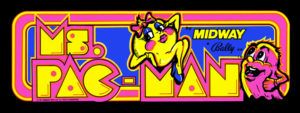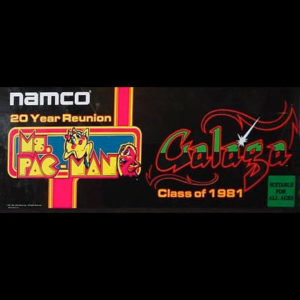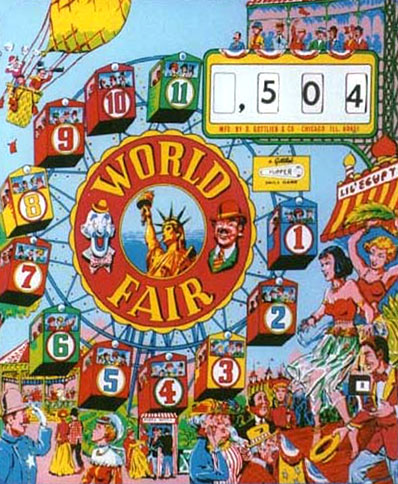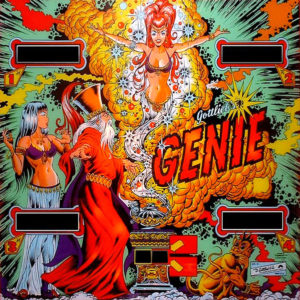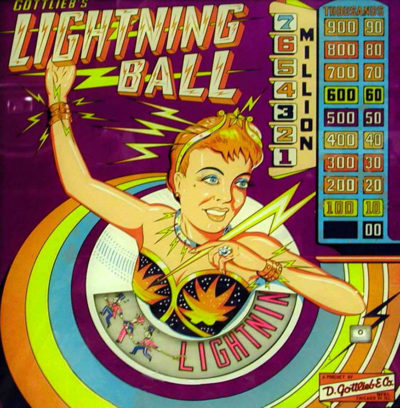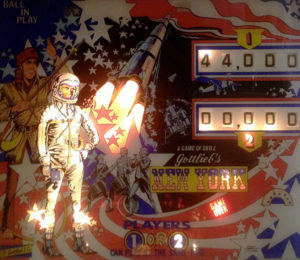-
This solid-state game was very popular when it was released and has a lot of smooth shots to complete. It was designed by Jim Patla with artwork by Paul Faris. Production run was 18,250 units. This pre-speaking pinball has Hugh Hefner on its backglass with Bunny Sondra Theodore posing. At the top of the game are four rollover lanes, which advance when hit to a special and advance the bonuses and grotto award. Hitting the five Bunny targets also advance a feature to win extra balls and specials. A unique kickback lane advances with every entrance into it. A five-pack of drop targets also advance certain features on the game. If 20,000 points are made on the bonus system, this point count is carried over to all remaining balls and then some. The nicest shot on the game is going up the right side from the flipper and looping the ball into the grotto. The sound originates from the old TV show “Playboy After Dark.”Galaga is a single-screen shoot-em-up in which the player controls a “fighter” spaceship and must defend the home planet against the on-coming hordes of alien invaders. The fighter can only move left and right along the bottom of the screen. Galaga aliens fly onto the screen in a variety of formations – dropping bombs as they do so – before forming troop lines at the top of the screen. Once a troop line is formed, the aliens separate and start attacking the player’s ship in ones, twos and threes. The top line “boss” aliens need to be shot twice before they are destroyed. The boss alien has a tractor beam that can capture the player’s fighter. A captured fighter changes color from white to red and stays with that particular boss Galaga until it’s destroyed. The fighter can be retrieved by destroying the boss Galaga that captured it, but players must be careful not to destroy the captured ship itself, or that ship is lost. A rescued fighter changes color back from red to white and links up with the player’s current fighter, doubling its fire power. As players progress through each screen, the speed and number of alien attacks increases. Alien formations also become more complex, making the aliens harder to shoot. Bonus fighters are awarded periodically throughout the game, as players reach specific point values (dictated by the “bonus life” dip-switch setting). Each enemy ship also has an assigned point value (see scoring below). The alien troop lines that form at the top of the screen are, from top to bottom: Boss Galaga, Butterflies (red/white bug ships) and Bees (blue/yellow bug ships). I cut my teeth on video games like this back in the ’80s. Pinball lost momentum in this era as video games ruled the arcade at this time.Sharp Shooter is an EM Rifle game. The shooter can choose from a variety of targets in a well-decorated range, which uses black lights to make some interesting pictures. The shooter can choose from candles, tumbling acrobats, bicycle-riding clowns, ducks and a bonus bullseye. The candles are worth 200 points; the bonus target switches from 100-200-300 points; and the other targets vary shot by shot from 30-50-100 points. The game has provisions for setting the replay score, number of shots per game and a random-miss factor and a recoil solenoid. The game also has electronic sounds such as ducks quacking.This game is considered to be the #3 game of the ’70s. It was released in June, designed by Greg Kmiec and art by Dave Christiansen. It had a production run of 16,200 units, a record to that date for production by Bally. The game has a rock star tie in the form of Elton John, who was at his peak back then. The movie “Tommy” was also an influence for the game’s graphics. The triple flipper arrangement of the game made for fast action on the playfield. A bonus feature is present, a 5-bank drop target that when hit, advances through extra ball and then special. A free ball gate, when activated, extends the ball’s life. This game is one of the last most collectible electromechanical-era games produced. It was the complementary game to Bally’s Wizard pinball which, again, found its theme based on the “Tommy” movie by The Who. Celebrity tie-ins were found to be big sellers.Another rare machine stands before you. Although 2,885 units were produced, they were all sent to France as a promotion in a contest to market Canada Dry soda. Designed by Ed Krynski and art by Gordon Morrison, this game was released in the US as a one player, two player and four player version. If you like drop targets this is your game. Fifteen drop targets live in this playfield design! If you’re skillful enough to hit all the upper drop targets, the side extra ball rollovers activate. The same is true if you hit the bottom five drop targets. If, however, you’re skillful enough to complete all fifteen targets, the specials are activated. Score is another way to win. The machines put on location in France provided high-scoring winners with monetary prizes from Canada Dry. I wish they would do this in the united States, especially in Atlantic City.This game was produced in December of the year and designed by Harry Mabs with artwork by Roy Parker. 3,000 of these machines were made. The unique feature built into this machine is the animation unit in the top center of the play field. Two mechanical men are represented as boxers in a boxing match. Lights illuminate the bout when a knockout is scored by rolling over a “KO” rollover, a “KO” target, or completing bumpers 1 to 5. This game is one of the first examples of pinball animation. Another feature of the game is the pop-up bar at the bottom of the play field, preventing you from losing your ball in play for an extended period. Since the gap between the flippers is so massive, this addendum to the play field was installed to prolong the play period of the ball. A special feature is included in the game as well as a replay if 15 knockdowns are scored in one game and a replay for every knockdown scored thereafter.•27” HD LCD Display featuring full color custom animation, movie clips, scoring, attract mode, back glass artwork and more.. •Standard stainless steel spring-loaded metal lockdown bar and side armor •RGB-LED Playfield Lighting •Super-White LED GI Lighting •Full color digitally printed cabinet and back box artwork •7 Speaker 2.1 Digital Audio system. •Each game will have a number affixed to the game apron to be seen under the playfield glass… •Premium Clear Coated PlayfieldThis electromechanical two-player game was designed by Steve Kordek. The game reminds one of an older game, as an animated golfer is on board that you aim to hopefully sink a ball in the appropriate hole. The nine scattered holes are tough to sink, especially the back ones. The lower your score in strokes, the better with this game (no handicap is given). Free games may be awarded set by the operator for low-stroke counts after completing so many holes. A neat and rare game.There are 7 Doctors, as one can plainly see from the backglass… quite conveniently, they are numbered 1-7. Each Doctor has the effect of changing the rules of one area of the Playfield, making a list of the rules all the more annoying and probably confusing. First some general information about the Doctors… there are many ways to “spot” doctors throughout the game – one is awarded at the start of any ball, and can be spotted through the Transmat target or Video Mode. At the start of a ball (or when a ball has been locked), you get to choose the “current” doctor – his picture will flash on the backglass. When a doctor- spotting shot is made, the current doctor will become solidly lit (so his attributes are carried over for the rest of the game), and the “current” doctor becomes the previously unlit doctor directly to the left of the previous one. There are 2 ways to spot all seven doctors – either go through them all one-by-one, or shoot the Emperor Daleks jackpot. Either way, all of them will be lit for the rest of the game, and you receive an additional bonus of 2OM, as well as a small animation, which plays even after a tilt! After all 7 doctors are spotted, they can be spotted a second (third, etc) time, and running through all 7 a second time awards another 2OM bonus. Also, each doctor spotted in the game (this count may be more than 7) is worth a 1M bonus at the end of the last ball (so don’t tilt it!), and this bonus (unlike the regular bonus) is multiplied by the Playfield X.Gottlieb hatched this add-a-ball machine from the skunkworks in April of the year, designed by Ed Krynski and artwork by Gordon Morison. This single-player machine has a bowling theme and only 715 units were produced at that time. The replay version of the game was called King Pin and many more of these machines were produced. The theme of this game is the drop target completion. By carefully aiming the four inherent flippers on board the playfield, one must try to complete the horizontal row of targets. Doing so will reset the targets and the wow feature activates, giving you a shot at the accomplishment of winning extra balls. Score is another way to pop free balls. The ten drop targets are not so easy to complete and the wow feature advances when you roll over the star rollover. This game is challenging, but a beginner can have ample fun with the machine.This replay game came out in December of the year with a four-player replay version (Vulcan) being released two months prior. 970 units were produced. Ed Krynski designed the game with Gordon Morison taking the credit for artwork. Two sets of drop targets in the firing range of the flippers make for a lot of accurate target shooting. Lighting all four green drop targets lights the extra ball target. The bonus value is doubled by hitting the bank of five drop targets. Making one to five numbered sequence lights two rollovers for a special as well as increases the white drop target value to three bonus advances. The kickout hole awards from 1,000 to 5,000 points dependent on the number of green drop targets hit at that moment in time. All in all, a nicely balanced game. Bonus is awarded upon draining the ball also.Galaxian (Gyarakushian?) is an arcade game that was developed by Namco and released in October 1979. It was published by Namco in Japan and imported to North America by Midway that December. A fixed shooter game in which the player controls a spaceship at the bottom of the screen, and shoots enemies descending in various directions, it was designed to compete with Taito Corporation’s successful earlier game Space Invaders (which was released in the previous year, and also imported to the US by Midway Games). The game was highly popular for Namco upon its release, and has been a focus of competitive gaming ever since. It spawned a successful sequel, Galaga, in 1981, and the lesser known Gaplus and Galaga ‘88 in 1984 and 1987 respectively, as well as many later ports and adaptations. Along with its immediate sequel, it was one of the most popular games during the golden age of arcade video games. Galaxian expanded on the formula pioneered by Space Invaders. As in the earlier game, Galaxian features a horde of attacking aliens that exchanged shots with the player. In contrast to Space Invaders, Galaxian added an element of drama by having the aliens periodically make kamikaze-like dives at the player’s ship, the Galaxip.[1] This made it the first game to feature enemies with individual personalities.[2] The game’s plot consists of a title screen that displayed the message “WE ARE THE GALAXIANS / MISSION: DESTROY ALIENS”.[3] Galaxian was very successful for Namco and introduced several “firsts”. Although not the first color video game, Galaxian took RGB color graphics a step further with multi-colored animated sprites and explosions, different colored fonts for the score and high score, the scrolling starfield, and graphic icons that show the number of lives left and how many stages the player had completed. It also features a crude theme song and more prominent background “music.” These elements combine to create a look and feel that would set the standard for arcade games in the 1980s such as Pac-Man. Gameplay The gameplay is relatively simple. Swarm after swarm of alien armies attack the player’s ship that moves left and right at the bottom of the wraparound screen. The ship can only have one shot on screen at a time. The player defeats one swarm, only to have it replaced by another more aggressive and challenging swarm in the next stage. A plain and repetitive starfield scrolls in the background.This was one of my favorite arcade machines in its heyday. Midway found much success with this one-player machine. A faux periscope is the viewing platform for action in this battle to sink enemy ships. You are allowed a fixed number of torpedoes per game to sink as much tonnage as possible per outing. A perfect game awards bonus torpedoes. The lighting effects and sounds are wonderful for their day. You’re allowed to “steer” your torpedo to about one-fourth of theway to your enemy. Giving just the right amount of lead time to each ship is critical. Some shipsare faster than others and these sinkings award more points. Go ahead, captain, sink the fleet!In this, the first proper sequel to Namco’s legendary pill-eating maze game, players must once again run around a number of mazes, eating all of the pills that are scattered throughout. The ever-present ghosts (Blinky, Pinky, Inky and Sue) return to hamper the player’s progress. The infamous “power pills” are also present and correct, with four appearing in each maze. Namco introduced a number of changes and enhancements over the original game. The first difference is in the main character. For the first time in video-game history, the game’s lead character was female. Ms. Pac-man is almost identical to the original character with two main differences: she wears a bow in her “hair” and is also wearing lipstick. Another change from the original is that the bonus fruit items are no longer static but now move randomly around the mazes. Ms. Pac-man features four different maze layouts, which alternate every two to four screens: the first maze is only encountered in rounds 1 and 2 and has 220 dots and four power pills. There are two sets of tunnels in this maze equidistant from the center of the maze. You must clear this maze twice before moving on to the next maze. The second maze is only encountered in rounds 3, 4, and 5, and has 240 dots and four power pills. There are two sets of tunnels in this maze: one set in the lower half, and the other set at the very top. You must clear this maze three times before moving on to the next maze. The third maze is first encountered in round 6 and has 238 dots and four power pills. Unlike all other mazes, there is only one set of tunnels in this maze, slightly above the center of the board. You must clear this maze four times before moving on to the next maze. The fourth and final unique maze is first encountered in round 10 and has 234 dots and four power pills. There are two sets of tunnels in this maze, directly next to one another in the middle of the maze. The turns at the entrance to the tunnels change the usual immediate accessibility of the tunnels and should be taken into account. You must clear this maze four times before moving on to the next maze.May was the release month for this game. Designer Ed Krynski and artist Gordon Morison put together the package. Production run was low, at 675 units. This is an add-a-ball game variant, the replay version was called High Hand. The challenging part of this playfield design is trying to lock a ball in the eject hole for extra balls. Four batteries of drop targets in four colors are along the sides of the playfield. Making a completion of a color of drop targets increases the value of the eject and side drains. If all the drop targets are completed, the extra ball features light up. Score is another way to win balls set by the operator. No match units were incorporated into these games as, again, that was considered a form of gambling, i.e. winning a free game.This machine is based on the ’30s radio series then turned into a movie. Design accolades go to Brian Eddy with art scripted by Doug Watson. 4,247 of these machines were made. The interesting feature in this machine is the elevated upper-left playfield. This playfield is gained access to once the drop target is hit. Once this challenge is complete, another shot to this ramp shoots the ball upstairs to this feature. Pressing the flipper buttons moves the paddle left or right. The kicker is activated by an optic sensor automatically to hit all the targets if your aim is sure. This game also has a thrust magnet which grabs the ball in action and shoots it up the playfield into the next feature. No pop bumpers are on the playfield, which is a rare event. Another first incorporated into this playfield are two ramp diverters which are player adjustable. Completing the six scenes of the story award you with the final battle sequence of good against evil.This classic game is currently rated as the number two game of its generation. 4,650 units were produced in April of the year with design credits going to Roy Parker for artwork and Wayne Neyens for design. The game was produced to coincide with the New York World’s Fair of 1964-1965. The 11 ferris wheel cars depicted on the backglass are represented on the play field by roll overs and targets. Hitting a numbered car lights the corresponding backglass car. The interesting gadget developed for this game is the center spinning disc (i.e. ferris wheel) in the middle of the game. By spinning the disc, one randomly spots a ferris wheel car on the backglass. Completing all the cars awards a replay and the randomly advancing lighting of a rollover which, if you’re skilled enough, would award a replay if hit. Score is another way to conquer the machine. Enjoy trying your hand at this classic machine.Demolition Man is a Williams pinball machine released in February 1994. It is based on the motion picture of the same name. It is part of WMS’ SuperPin line of widebody games. Sylvester Stallone (John Spartan) and Wesley Snipes (Simon Phoenix) provided custom speech for this game during ADR sessions at Warner Brothers Studios in Los Angeles under the direction of Jon Hey. Hey scored the music of the pinball game in part based upon the movie score by Academy Award winner Elliot Goldenthal, but including new music. Multiball modes This game is centered on multiball modes. The player has to shoot the left ramp when the “freeze” light is lit (lit by the right inlane) to “lock” a ball. When the required amount of locks are made, the player has to shoot the left loop to start multiball. Fortress Multiball (2 balls required) – A normal multiball mode with 3 jackpots and the “Super Jackpot”. 1-4 balls can be shot up. Museum Multiball (3 balls required) – Jackpots everywhere, except the standups. After the “Super Jackpot” the Multiball starts over. 3-6 balls can be shot up. Wasteland Multiball (4 balls required) – Same as “Fortress Multiball”. If not getting the lighting jackpots, the next jackpot will appear and the previous jackpot will stay. 4-8 balls can be shot up. Cryoprison Multiball (5 balls required) – The “Super Jackpot” is lit, from the beginning of the multiball. After getting the “Super Jackpot” it will lit again after hitting an arrow or more. Completing all four multiball modes lights the right ramp for the wizard award, Demolition Jackpot, which is the total amount of all the jackpots collected during the game. The Demolition Jackpot is lost if the ball drains. If you hit all jackpots in a multiball, the “Super Jackpot” light will lit. Getting the ball up to the “Cryo-Claw” whilst, you will get it. The “Super Jackpot” light turns off, if all the balls drain and the Multiball is over, the “Super Jackpot” is lost.This machine was a big hit for Williams with 12,000 machines created. A skill shot starts your adventure with different point values. A three-bank drop target or single right target advances the planets lit in the playfield. If you advance to the lit planet, a free game is your reward. The light grid, if hit when a solo target is lit, opens the visor. Otherwise, hitting all the lights opens the visor. Locking two balls in the “eyes” of the robot starts two-ball multiball. Lock one ball in one eye and shoot for the left solar ramp. Advance the bonus value by making the left ramp loop when the visor is down. This game is fun, challenging and the vocals egg you on throughout your adventure.This game scores as the #10 most desirable game of the ’70s. It came out in August, designed by Ed Krynski and Allen Edwell with artwork by Gordon Morrison. Backbox animation is included in the game. A giant thermometer advances when drop targets are hit and by rolling over the rollovers. If the thermometer is advanced to the top, the special lights on the eject hole. A, B, C and D rollovers, if hit, advances the thermometer 5 advances. If a player completes all the letters, he gets 5,000 points in the eject hole. A double bonus feature is present also. All in all, a very fast-paced game. Artists, as a general rule, didn’t help design playfields. They were given the game mechanically more or less completed and had to invent the graphics and theme on their own.(Electromechanical Version) Bally released Evel Knievel in June of the year. Both electromechanical and solid-state versions of the game were fabricated. The reason two different platforms were made was due to the newness of the solid-state platform not being fully trusted or many arcade operators not being versed in the solid-state computerized machines. The “old faithful” mechanical versions used the same technology since the beginning of pinball that included relays, steppers, and score motors. This game was produced in mass quantity in the solid-state format with 14,000 pieces being fabricated. This game is one of only 155 made. This is probably one of the best examples of this rare run of machines. The play parallels the solid-state version, but an accumulated memory of targets hit isn’t stored in memory and awarded. This game just remembers your last hit of the last target. Enjoy!This wide-body solid-state game was a high-production model with 6,800 units produced. The artwork was Gordon Morison’s creation with Ed Krynski penning the playfield. This pre-vocal machine is jam-packed with features. A mini playfield in the upper left consists of drop targets which, when completed correctly, light extra ball and special targets on the main playfield. Hitting a, b, c, and d on the top rollovers lights an extra ball feature on the mini playfield. Hitting the yellow star drop targets advances the multiplier bonus up to a 5x level. Interesting side drain configurations as well as the potential to score the kick-out hole playfield bonus prior to draining a ball is interesting. Five flippers grace the game. All in all, a great package and interesting flow for an early wide-body creation.This macabre machine was also one of the most risque games ever made. The vocals are very suggestive as well as the theme of the game. The factory installed a family mode version to the game as well as a cover to the large breasts presented by Elvira on the back glass. Designed by Dennis Nordman and Mark Weyna, the art package came out of the mind of Greg Freres. The object of the game is to complete the six modes represented on the bottom of the playfield. Once all six modes are complete, the object then is to shoot the jackpots with two balls in play all the way up the stiff-o-meter. Doing so produces a pinball fireworks show of light as well as the flippers activating by themselves. The hardest feature on the game is represented in the back glass. If you can achieve all lights by stopping the spider on each and every stop displayed, a special spider multiball is activated. Happy Halloween!Frogger is an arcade game introduced in 1981. It was developed by Konami, and licensed for worldwide distribution by Sega/Gremlin. The object of the game is to direct frogs to their homes one by one. To do this, each frog must avoid cars while crossing a busy road and navigate a river full of hazards. Skillful players may obtain some bonuses along the way. The game is regarded as a classic from the golden age of video arcade games and was noted for its novel gameplay and theme. It was also an early example of a game using more than one CPU, as it used two Z80 processors. Frogger is still popular and versions can be found on many Internet game sites. By 2005, Frogger had sold 20 million copies worldwide, including 5 million in the United States. The player starts with three, five, or seven frogs (lives). The player guides a frog which starts at the bottom of the screen. The lower half of the screen contains a road with motor vehicles, which in various versions include cars, trucks, buses, dune buggies, bulldozers, vans, taxis, bicyclists, and/or motorcycles, speeding along it horizontally. The upper half of the screen consists of a river with logs, crocodiles, and turtles, all moving horizontally across the screen. The very top of the screen contains five “frog homes” which are the destinations for each frog. Every level is timed; the player must act quickly to finish each level before the time expires. The only player control is the joystick used to navigate the frog; each push in a direction causes the frog to hop once in that direction. On the bottom half of the screen, the player must successfully guide the frog between opposing lanes of trucks, cars, and other vehicles, to avoid becoming roadkill. The middle of the screen, after the road, contains a median where the player must prepare to navigate the river. By jumping on swiftly moving logs and the backs of turtles, the player can guide his or her frog safely to one of the empty lilypads. The player must avoid crocodiles, snakes, and otters in the river, but may catch bugs or escort a lady frog for bonuses. When all five frogs are directed home, the game progresses to the next, harder level. After five levels, the game gets briefly easier yet again gets progressively harder to the next fifth level. There are many different ways to lose a life in this game (illustrated by a “skull and crossbones” symbol where the frog was), including: 1.Being hit by a road vehicle 2.Jumping into the river’s water 3.Running into snakes, otters or into a crocodile’s jaws in the river 4.Jumping into a home invaded by a crocodile 5.Staying on top of a diving turtle until it has completely submerged 6.Riding a log, crocodile, or turtle off the side of the screen 7.Jumping into a home already occupied by a frog 8.Jumping into the side of a home or the bush 9.Running out of time before getting a frog home Frogger is available as a standard upright or cocktail cabinet. The controls consist solely of a 4-direction joystick used to guide the frog’s jump direction. The number of simultaneous players is one, and the game has a maximum of two players. The game’s opening tune is the first verse of a Japanese children’s song called Inu No Omawarisan (The Dog Policeman). The song remained intact in the US release. Other Japanese tunes that are played during gameplay include the themes to the anime Hana no Ko Lunlun and Araiguma Rascal.This beautiful piece of art was designed by Jim Patla with artwork by Paul Faris. 3,700 units were designed and a reprise run of 1,550 games were made in 1983 due to its popularity. The first thing one notices when walking up to this game is the color theme and the vibrant lighting. Pressing either flipper button when the game is in attract mode gives you an instructional light show on its features; the orb feature is the most exciting. Spelling out orbs by completing the drop target sequence stores another potential ball into play if the release orbs target is hit. This target has a magnet under it which holds the ball in position when the orbs are ejected. The balls are ejected from under the playfield through a baseball machine pitcher-like mechanism mounted upside down in the shooter lane. This mechanism was inspired by a Bally ‘50s game called Balls A Poppin. The captive ball drop target sequence is another tough goal to accomplish.Wayne Neyens and Roy Parker again teamed up to create this pretty late-‘50s pin with an animated backglass. 950 units were made. The playfield has two gobble holes, which award 100,000 points for each rollover completed. If all six rollovers are made, a replay is awarded and the gobble holes are special holes. The main feature of the game is advancing the lightning ball backglass spelling. Each time you make the three colors on the playfield via rebound rubber or rollovers, the unit advances one step. If you are skillful enough to complete the lightning ball spellout, a replay is awarded, and each time you make the three colors to advance the letter, another replay is added. It’s not an easy task to complete. There’s always beating the game by scoring or matching. This game was somewhat retro as it has backglass light scoring, since Gottlieb already used reel scoring.The table is the first Williams WPC machine designed to feature a dot-matrix display. But due to the long design phase, Gilligan’s Island was the first manufactured with a DMD. Terminator 2: Judgment Day was the first game to feature an autoplunger (replacing the traditional plunger), as well as a ball-firing cannon (dubbed, “Gun Grip Ball Launcher”). Finally, T2 was the first game to feature a video mode, a mini video game featured on the DMD. Arnold Schwarzenegger provided voices for the game. Some playfield design elements were based on Ritchie’s 1980 classic, Firepower. T-1000 was not included in the artwork of the table, with the exception of a small image of actor Robert Patrick because of pre-release secrecy of the movie. The character was only included in the display animation because when the DMD programming was finalizing the liquid metal character was already public knowledge.
- Release date: July 1991
- System: Williams WPC (Dot Matrix)
- Design: Steve Ritchie
- Programming: Dwight Sullivan
- Artwork: Doug Watson
- Mechanics: Carl Biagi
- Music: Chris Granner
- Sound: Chris Granner
- Production run: 15,202
-
This solid-state game was very popular when it was released and has a lot of smooth shots to complete. It was designed by Jim Patla with artwork by Paul Faris. Production run was 18,250 units. This pre-speaking pinball has Hugh Hefner on its backglass with Bunny Sondra Theodore posing. At the top of the game are four rollover lanes, which advance when hit to a special and advance the bonuses and grotto award. Hitting the five Bunny targets also advance a feature to win extra balls and specials. A unique kickback lane advances with every entrance into it. A five-pack of drop targets also advance certain features on the game. If 20,000 points are made on the bonus system, this point count is carried over to all remaining balls and then some. The nicest shot on the game is going up the right side from the flipper and looping the ball into the grotto. The sound originates from the old TV show “Playboy After Dark.”




